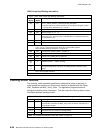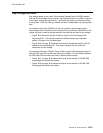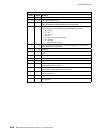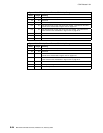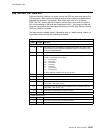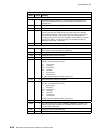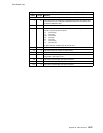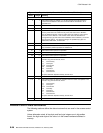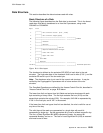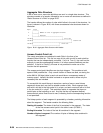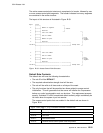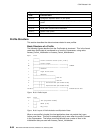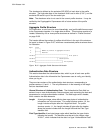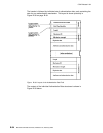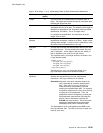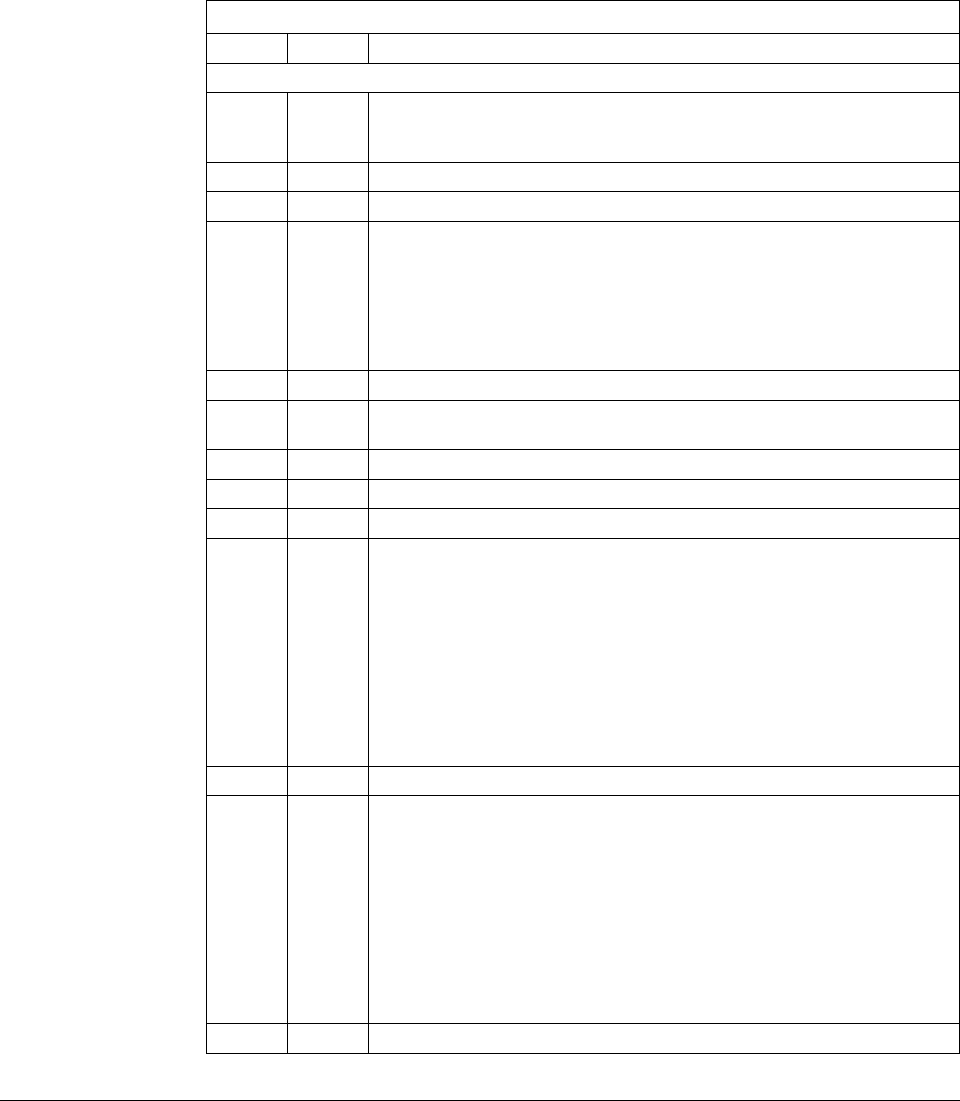
CCA Release 2.54
Figure B-30 (Page 2 of 2). Key-Record-List Data Set Format (OS/400 only)
Offset Length Meaning
Detail Record
0 1 This field contains an asterisk (*) if the key-storage record did not have a
correct record validation value; this record should be considered to be a
potential error.
1 2 This field contains spaces for separation.
3 64 This field contains the key label.
67 8 This field contains the key type. If a null key token exists in the record or if
the key token does not contain the key value, this field is set to NO-KEY.
For the DES key-storage, if the key token does not contain a control vector,
this field is set to NO-CV. If the control vector cannot be decoded to a
recognized key type, this field is set to ERROR, and an asterisk (*) is set into
the record at offset 0. For PKA key-storage, the possible key types are:
RSA-PRIV, RSA-PUBL, or RSA-OPT.
75 2 This field is reserved filled with space characters.
77 4 For an internal token, this field will contain (the first) two bytes of the Master
key verification pattern expressed in hexadecimal.
81 1 This field contains spaces for separation
82 8 Reserved, filled with space characters.
90 2 This field contains spaces for separation.
92 19 This field contains the date and time when the record was created. The
format is ccyy-mm-dd hh:tt:ss, where:
cc Is the century
yy Is the year
mm Is the month
dd Is the day
hh Is the hour
tt Is the minute
ss Is the second.
A space character separates the day and the hour.
111 2 This field contains spaces for separation.
113 19 This field contains the last time and date when the record was updated. The
format is ccyy-mm-dd hh:tt:ss, where:
cc Is the century
yy Is the year
mm Is the month
dd Is the day
hh Is the hour
tt Is the minute
ss Is the second.
A space character separates the day and the hour.
132 2 This field is reserved filled with space characters.
Access-Control Data Structures
The following sections define the data structures that are used in the access-control
system.
Unless otherwise noted, all two-byte and four-byte integers are in big-endian
format; the high-order byte of the value is in the lowest-numbered address in
memory.
B-28 IBM 4758 CCA Basic Services, Release 2.54, February 2005



